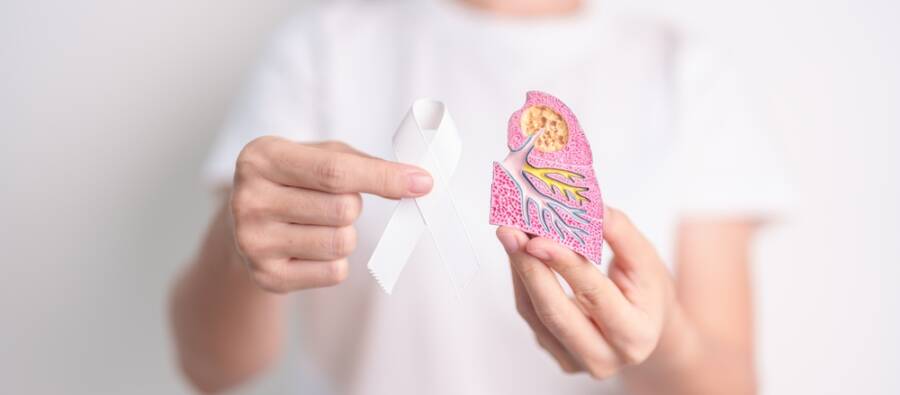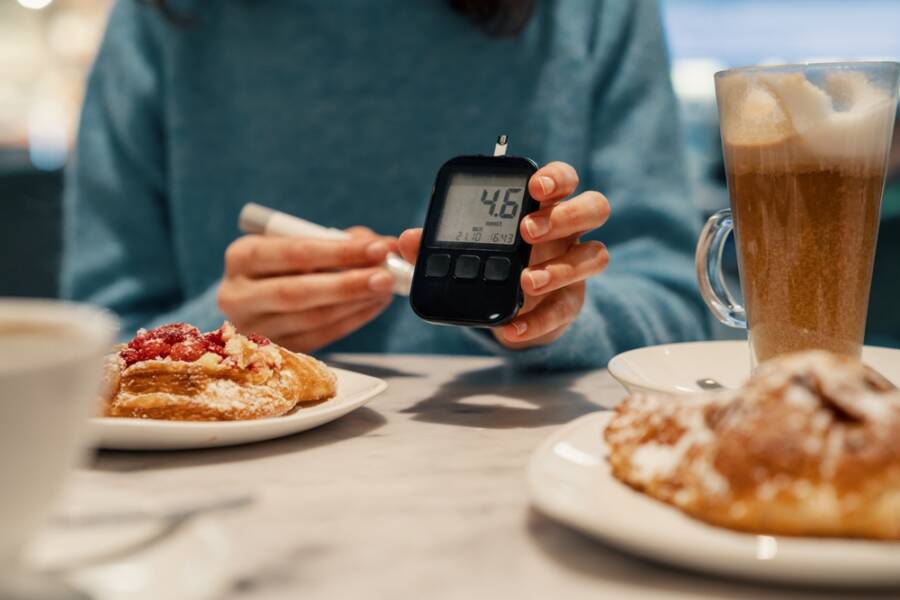Do you know these tricks you can use to lower your blood sugar?
Right now, there are over 96 million adults who have prediabetes in the United States, and 70% of them will later develop type 2 diabetes. All of these statistics were made public by the American Diabetes Association. Also, more than 37 million people already struggle with type 2 diabetes.
Keeping your blood sugar in check should not be a daunting task, but hopefully, there are a number of expert-approved tricks that are doable and can help you bring your blood sugar back into a healthy range.
So, here are a few steps that can help you reduce your risk of developing diabetes and also lower your blood sugar.

1. Cut back on ultra-processed foods
We all know the obvious culprits for blood sugar spikes, such as cake and cookies, but there is another food category that can completely unbalance your glucose levels, and that is ultra-processed carbohydrates.
Yes, it’s true that sugary sweets are the main enemy regarding the control of blood sugar levels, but a bigger problem might actually be these processed carbohydrates. Bread, pasta, noodles, and white rice—we consume them pretty often and we love them—but these foods can be a real threat that causes rapid blood sugar spikes.
Because of this, you need to fight back, and a good way to do that is to try to replace these ultra-processed carbs with other foods that have carbs but don’t mess with your blood sugar levels.
Try to replace them with grains, vegetables, and legumes, as these foods have complex carbohydrates that take longer to break down, and there will be a steady rise in blood sugar. This means you will feel energized without having to deal with those unwanted sugar crashes.
2. Be aware of your numbers
As a general fact, according to the Centers for Disease Control and Prevention, more than 80% of those suffering from prediabetes are not aware of it.
If you are between 35 and 70 and overweight or obese, you should get screened for diabetes and prediabetes. Also, the American Diabetes Association (ADA) recommends everyone over 45 get screened, and if you have a higher risk of diabetes, you should get your blood sugar tested even earlier.
You may start by estimating your specific risk using the ADA’s online tool, which asks questions about factors associated with risk such as age, direct family history of diabetes, exercise level, and race.
Now you should know that a healthy blood sugar number depends on the type of test that is conducted. For a fasting blood sugar test, anything that is below 100 milligrams per deciliter is healthy. Between 100 and 125 mg/dL, it is considered prediabetes, and if your levels are equal to or higher than 126 mg/dL, it means you have diabetes.
There is another test out there called hemoglobin A1C, and this one measures an average blood sugar over three months and presents it as a percentage. If your results fall between 5.7 and 6.4%, then you have prediabetes. If this percentage is 6.5% or higher, you have diabetes.
3. Sleep more
Yes, if you feel tired, the best thing you can do is to lie down for a little bit. Sleep is the best preventive care for most metabolic diseases and also for weight management. Good sleep is critical when you want to lower your chances of developing diabetes, and this is why you should try to get at least seven hours of sleep every night.
When you don’t get an adequate amount of sleep, you have a higher risk of insulin resistance, and when this happens, your cells are no longer able to take care of the sugar in your blood and convert it into energy. This is how you get higher levels of glucose.
Besides all of this, when you are tired, you can no longer deal with daily stress in a healthy manner, and many studies show that a high level of cortisol is associated with insulin resistance.
When you are overstretched, your body will produce more insulin, which will later increase your hunger and, in the end, lead to you eating more calories than you need.
So what you can do is take care as much as you are able to and try to sleep well during the night, as this can effectively lower your blood sugar levels.

4. Try simple exercises
When you make various lifestyle changes, you need to keep in mind that they don’t need to be difficult to be effective. You can start small with some regular physical activity.
According to experts, you have to exercise for about 150 minutes a week. Now, this can be a brisk walk, as this is perfect, and you don’t have to make things more strenuous than that.
The best thing you can do is pick up a routine and stick to it. If you dream of exercises with exhausting requirements, the chances you’ll keep doing them regularly are pretty small. You can start with something that is not complicated at all.
You can try any form of exercise as long as you keep a routine. You don’t even need a gym membership, as you can simply exercise at home. If you have decided that you want to take a walk, try to do it right after you eat, because doing so can greatly help with your blood glucose level.
5. Try a balanced diet
If your goal is to lose weight, cutting back on carbs can be a good first step. Doing so can help you lower your chances of developing diabetes because it usually lowers blood sugar levels.
Try to have a diet similar to the Mediterranean diet. This means that you should strive to have more balanced meals. You can start by filling half of your plate with veggies. Dark leafy greens such as spinach are perfect, and don’t forget about beans and chickpeas. All of these foods are known to lower blood sugar levels, so you can give them a try.
Never forget to get your fibers. Those suffering from diabetes and those at risk of developing it should eat at least 14 grams of fiber per 1,000 calories. If you are 50 or older, try to eat 30 grams if you are a man and 20 to 25 grams if you are a woman.
Also, you can eat carbs, but don’t let them take up more than one-quarter of your plate. You can also try to swap them for healthy carbs such as quinoa or farro.
More importantly, stop villainizing foods. All of them are good, but you need to learn where they fit on your plate. For example, potatoes and corn will always raise your blood sugar, and the best thing you can do is to have as many veggies as possible on your plate.
It’s important to be able to monitor your blood glucose levels anytime you want, and for this, there is a gadget that can be quite useful: G-425-2 Blood Glucose Monitor Kit, Blood Sugar Test Kit with 1 Lancing Device 100 Test Strips 100 Lancets, 1 Glucometer
You should also read: Medicare Secrets Revealed! 6 Shocking Facts You Didn’t Know













